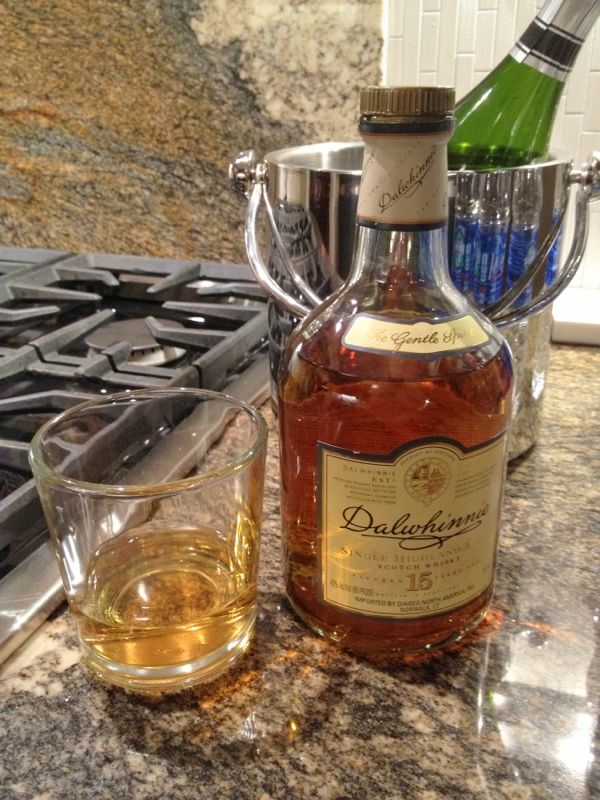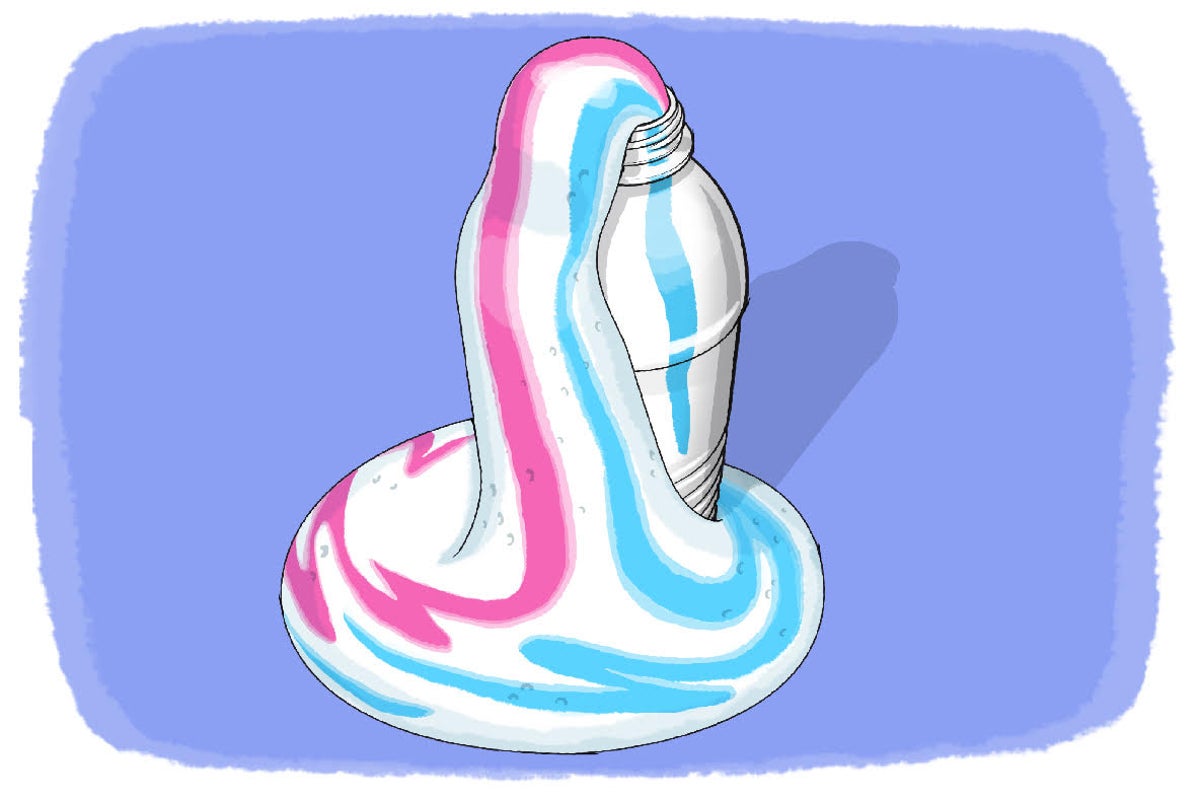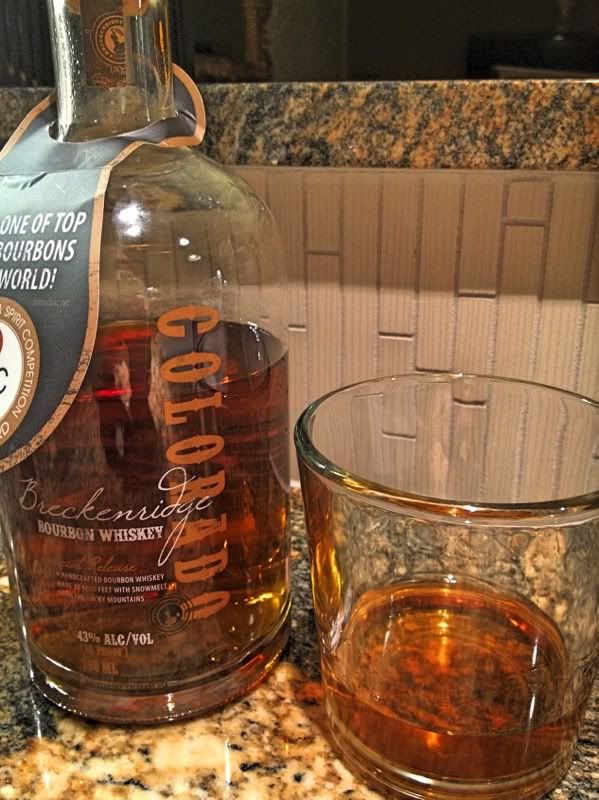Woodford beat me like a redheaded stepchild last night.
Announcement
Collapse
No announcement yet.
Whiskey aficionados
Collapse
X
-
I love seeing new people try Stagg. Did they learn to breathe through their nose until they felt it was safe to open their mouth?Originally posted by YALE View PostI'd already sampled a bit. It was very sweet, but not overpoweringly so. I had some rum-honey and cinnamon notes, and it was crazy warm. I had a couple whiskey newbs fight the heat.
Comment
-
-
Originally posted by Snatch Napkin View PostYou must supplement with some water while drinking, Young Grasshopper.
Especially when we get a bunch of dry wind blowing through. I'll have 8 ounces of water with every glass of whiskey.
Rage at work coupled with the excitement of being on vacation for 9 days made me overzealous. I don't think I touched water all night. Ended up unintentionally passing out on Craig and Lea's couch. lolz
Comment
-
LMFAO!Originally posted by talisman View PostRage at work coupled with the excitement of being on vacation for 9 days made me overzealous. I don't think I touched water all night. Ended up unintentionally passing out on Craig and Lea's couch. lolz
Now you're running behind schedule to get on the road to start the vacation. Don't forget to swing by and try this Scotch.
Comment
-
What nice gift!Originally posted by Strychnine View PostChristmas present from Slider (SlowLX) that I just got around to opening
I think David (Cobrajet69) turned me on to it at Yale's dad's place a long time ago, but I've never had a bottle of my own. I even offered Slider the first glass and he declined

Kudos Slider.
David
Comment
-
Most of this is just background. The highlighted portion is pretty interesting though.
 Armed with modern analytic tools, distillers are studying the wood in the barrels and experimenting with the aging process. Is nothing sacred?
Armed with modern analytic tools, distillers are studying the wood in the barrels and experimenting with the aging process. Is nothing sacred?
Barreling Ahead: Whiskey-Makers Break Cherished Traditions to Create New Flavors
Armed with modern analytic tools, distillers are studying the wood in the barrels and experimenting with the aging process. Is nothing sacred?
By Fred Minnick

BARREL SCIENCE: Tinkering with barrels allows distillers to experiment with new whiskey flavors. Image: Courtesy of Buffalo Trace Distillery
Master distiller Harlen Wheatley of Buffalo Trace Distillery draws a bourbon whiskey sample out of the barrel and pours it into a brandy snifter glass. Wheatley raises it into the light; the bourbon illuminates with rich colors of caramel, gold, straw yellow and light brown. He tastes the seven-year-old drink known as W. L. Weller and says, "That's really coming along."
As Wheatley moves onto the next barrel, the glass sits in the light, the bourbon shining brightly and illustrating the chemical change wrought by the barrel. After being poured into the barrel, the colorless spirit sat there or "aged" for seven years. The liquid mingled with the wood, giving the bourbon it's color, taste and smell.
A new generation of distillers have begun to break time-honored tradition and tinker with the barrels, relying on science and experimentation to bring new flavors into the spirits. For the bourbon whiskey business, the barrel is everything.
Bourbon barrel science
All bourbon is whiskey, but not all whiskey is bourbon. Congress declared bourbon "America's Spirit" in 1964 and, according to the Federal Alcohol Administration Act, bourbon whiskey must be produced from a fermented mash of at least 51 percent corn, although malted barely, rye or wheat can be added to the mash. Once distilled, the clear spirit must be stored at not more than 125 proof in charred new oak containers. Coopers have long built bourbon barrels out of American white oak, specifically the species Quercus alba, instead of the popular-for-wine French white oak or other common oaks.
American white oak's durability as well as its ability to hold water and oxygenate it make it favorable for bourbon barrels. American oak is denser and harder than French oak, making barrels less prone leakage. Q. alba also yields different flavor profiles appealing to the U.S. whiskey market, says Brad Boswell, whose Independent Stave Company makes the majority of U.S. whiskey barrels.
"American oak has lactone levels certainly not found in French oak," Boswell says. Lactones, a molecule in oak wood that imparts taste, yield a coconut flavor that can be controlled by cooking, toasting and seasoning the wood. Before a barrel is assembled, barrel pieces called staves air dry either indoors or outdoors. This process slowly degrades the wood "because of the microbial activity that grows and feeds off the wood. The rainwater, snow and the natural elements leach the [bitter] tannins out of the wood," Boswell says.
Once air-dried, the staves form a 53-gallon barrel that is later charred to filter out organosulfur compounds that are not eliminated in the distilling process. Distillers pour fresh distillate into the new, charred oak barrel, and the change begins.
Pressed into the wood
At the chemical level, the wood's lactones, sugars, tannins, cellulose, hemicellulose and lignins interact with the esters, aldehydes, butanols and two-methyl butanols to give the whiskey flavors of vanilla, caramel, spice, toast, smoke, coconut, coffee and mocha. Vapor and barometric pressure push the whiskey deep inside the wood, bringing out more intense flavor notes. Wheatley says the higher a barrel is in a several-story warehouse, the more pressure the barrel exerts on the liquid, pushing it deeper inside the wood. "When it's real hot outside with high pressure you hit the side of the barrel and the bung [stopper] will shoot up four or five feet," Wheatley says. "If it's cold outside with low pressure, it's hard to get the barrel bung out. It will just sit there."
Such observations are valuable for Wheatley and others who have dedicated their careers to studying the complexities of bourbon whiskey. For 200 years distillers did not have the science or perhaps the desire to test the limits. They just followed the procedures and practices from distillers before them: Make spirit from fermented mash, age in new charred oak barrel and bottle.
Then, Scotch whisky–makers started experimenting with new ways to enhance whisky in the 1980s, and bourbon distillers followed their lead. "Growing up in the industry you'd hear old-timers say you can't make barrels out of maple or other species," says Chris Morris, master distiller for Woodford Reserve Distillery. "But with the handcuffs off, due to the experimentations in the Scotch whisky industry, we said 'it's about time to see what we can and can't do.'"
Flavor experiments
To change whiskey, a master distiller has to change one of the whiskey's flavor sources. Most distillers choose to alter the wood during the aging process.
Morris recently launched Woodford Reserve "Four Wood," the seventh release in Woodford Reserve's annual Master's Collection, which sees Morris alter one of the five sources of the whiskey's flavor—grain, water, fermentation, distillation or maturation. Focusing on the time the whiskey spends in the barrel for 2012, Morris put standard six- to seven-year-old Woodford Reserve in a maple wood barrel as well as former sweet wine casks to lend more chocolate, nutty and dark cherry flavors not usually found in bourbon. Much like the original Woodford Reserve mingled with the new charred American oak barrel, the "Four Wood" chemically reacted with its barrel wood to produce a particular set of flavors. The former fortified wine barrels had wine soaked into the wood and are larger than standard whiskey barrels, giving the Woodford Reserve a larger surface-to-whiskey ratio as well as the small-scale fruity flavors that remained from the barrel's former alcohol.
In an effort to create a spicier-finishing whiskey, Maker's Mark added toasted French white oak staves to its existing bourbon barrel for its 2010 Maker's 46. "French oak has a different flavor profile than American oak—it’s spicier," Boswell says. "The French oak wood is lighter, a less dense wood. The oxygen interacts with the spirit differently than the American oak barrel."
French white oak packs nine times more tannic acid than American oak, Boswell says. When the Maker's Mark hits the barrel and mingles with the French and American oak, the whiskey takes on both woods’ profile characteristics. With the French spice and American sweetness, Maker's 46 delivers a spicy, rich caramel whiskey that leaves its flavor on the tongue longer than traditional Maker's Mark.
Aging has even gone beyond stationary warehouses. For its Ocean-Aged Bourbon, Jefferson's Reserve placed several barrels on a 126-foot ship and let the casks cruise at sea for nearly four years. The increased oceanic air pressure (compared with its warehouse), along with the Panama Canal's extreme heat pushed the whiskey deeper inside the wood, causing the wood sugars to caramelize and add a rumlike black hue. The whiskey breathed a little easier, too, says Trey Zoeller, who co-founded Jefferson's Reserve. "The porous nature of the barrel not only allows for evaporation of bourbon out of the barrel, but also [for] the barrel to breathe in the salt air, giving it a briny taste," Zoeller notes.
But Wheatley's Buffalo Trace Distillery may hold the record for whiskey experimentation. Since 1987 the company has conducted more than 1,500 barrel experiments for its Experimental Whiskey collection. These tests included studying sections of the tree to determine which heartwood should go into which stave and making a French oak barrel three times the size of a standard barrel. In the latest experiment Wheatley charred a regular bourbon barrel for 3.5 minutes instead of the standard 55 seconds. "We could not have gone a second more," Wheatley says. "The barrel nearly fell apart."
As for the whiskey—well, some people liked it, some didn't. And that's the standard reaction to the whiskeys that break tradition. Many whiskey purists despise these new-age whiskeys, saying distillers are trying to fix something that's not broken. "I've developed thick skin over the years," Morris says about the negative reviews. "Everything I do is about making [whiskey] better."
Comment






Comment